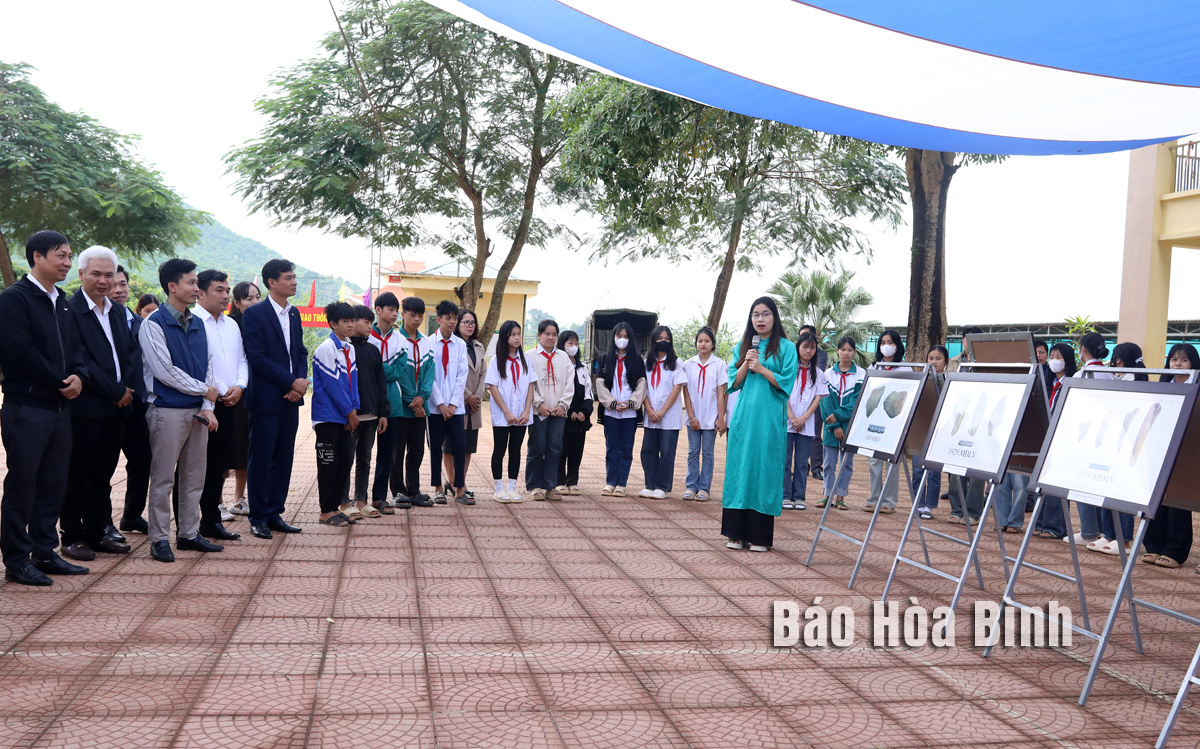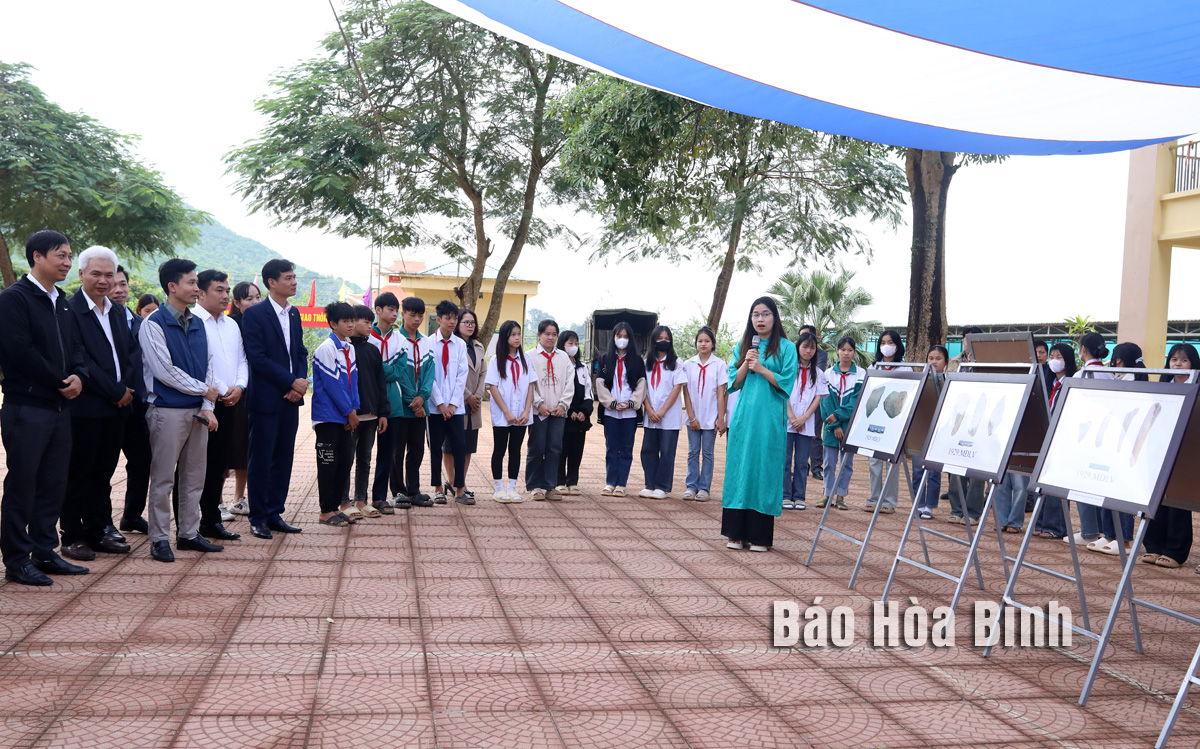
The Hoa Binh provincial Museum on October 28 organised a programme to disseminate the value of Vanh village stone shelter special national relic site, in Yen Phu commune, Lac Son district, at Yen Phu Primary and Secondary School, drawing the participation of nearly 200 students, staff members and teachers of the school.

Delegates and
students watch photos on display at the programme.
The students were introduced to the origin of the name
"Hoa Binh Culture", Trai hamlet’s cave in Tan Lap commune, and Vanh
village’s stone shelter; and watched photos featuring the research,
archaeological process and cultural activities related to the relic sites in
Lac Son district.
Notably, the stone shelter shows the characteristics of a
large relic site in the core area of Hoa Binh Culture in Vietnam. This is
evidence of the origin of Hoa Binh Culture in Vietnam and Southeast Asia.
It was recognised as a national archaeological site by the
Ministry of Culture and Information (now the Ministry of Culture, Sports and
Tourism) in 2003, and as a special national relic site by the Prime Minister in
July 2024.
The programme was a meaningful activity to raise awareness
and foster love for national culture and traditions among students. It was also
an opportunity for them to learn about and remember the historical values and
cultural beauty that have contributed to forming the identity of the homeland,
thereby joining hands to protect, preserve and promote traditional cultural
values.
The People’s Committee of Lac Son district held a ceremony on April 28 to receive the provincial relic certificate for the ancient rock carving site at Suoi Co stream, located in My Thanh commune.
A special music show titled "The country is in the fullness of joy” has been held at Hoa Binh Square in Hoa Binh city in celebration of the 50th anniversary of the liberation of the South and national reunification (April 30, 1975–2025).
The People's Committee of Lo Son commune, Tan Lac district, has organised the local annual traditional stream fishing festival on April 19 - 20.
As a land deeply intertwined with human history and Vietnam’s millennia-long journey of nation-building and defence, Hoa Binh is often revered for its epic tales and legends.
Residents of Hoa Binh boast a rich cultural identity, reflected in their unique language, traditional attire, customs, and folk melodies – described as "sweet as honey, clear as a mountain stream.”
Lac Son district’s Vu ban town held the 2025 Truong Kha temple festival on April 12–13 (the 15th–16th days of the third lunar month). Since its revival in 2019, the festival has been organised every three years, preserving valuable intangible heritage while meeting the community’s cultural and spiritual needs.



